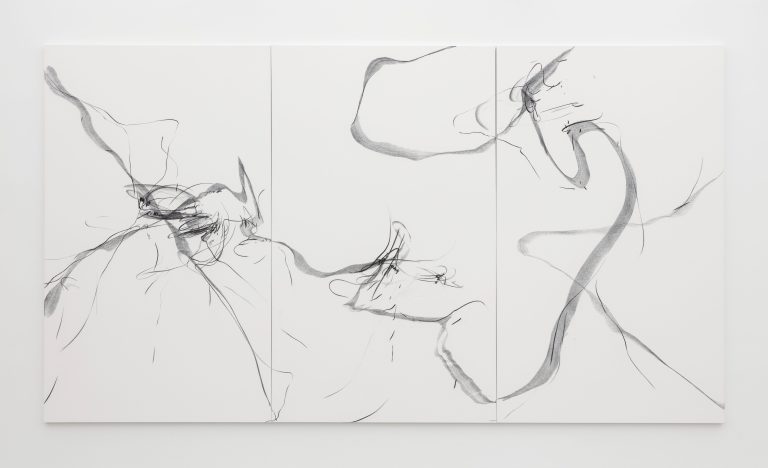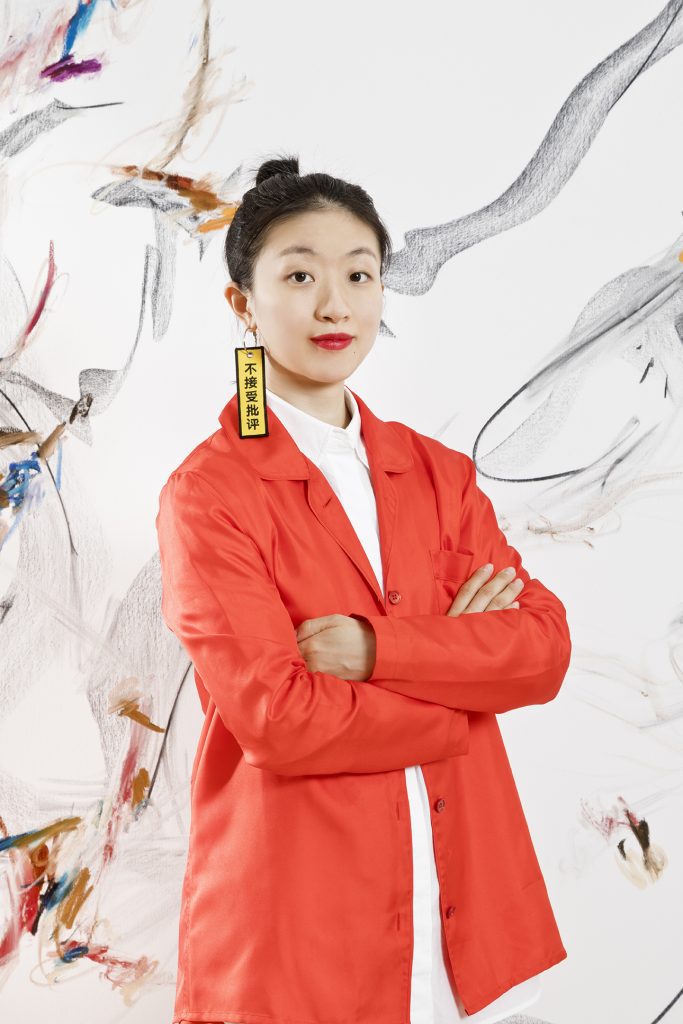
Photography by M2 STUDIO
Courtesy of PERROTIN and the artist
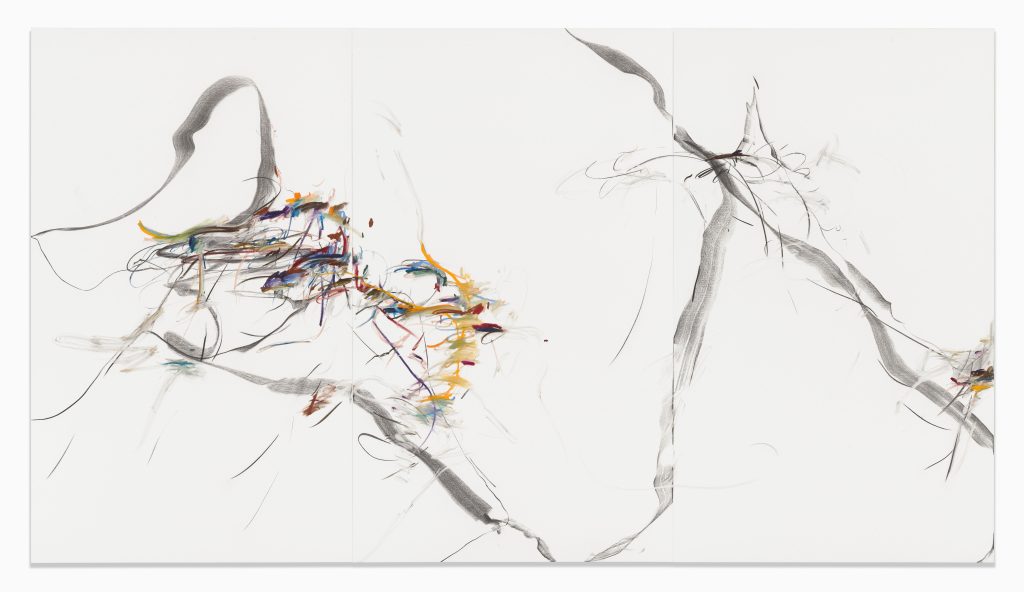
Zhuangzi Dreaming of Becoming a Butterfly No.1, 2023
Photography by ROMAN MARZ Courtesy of PERROTIN and the artist
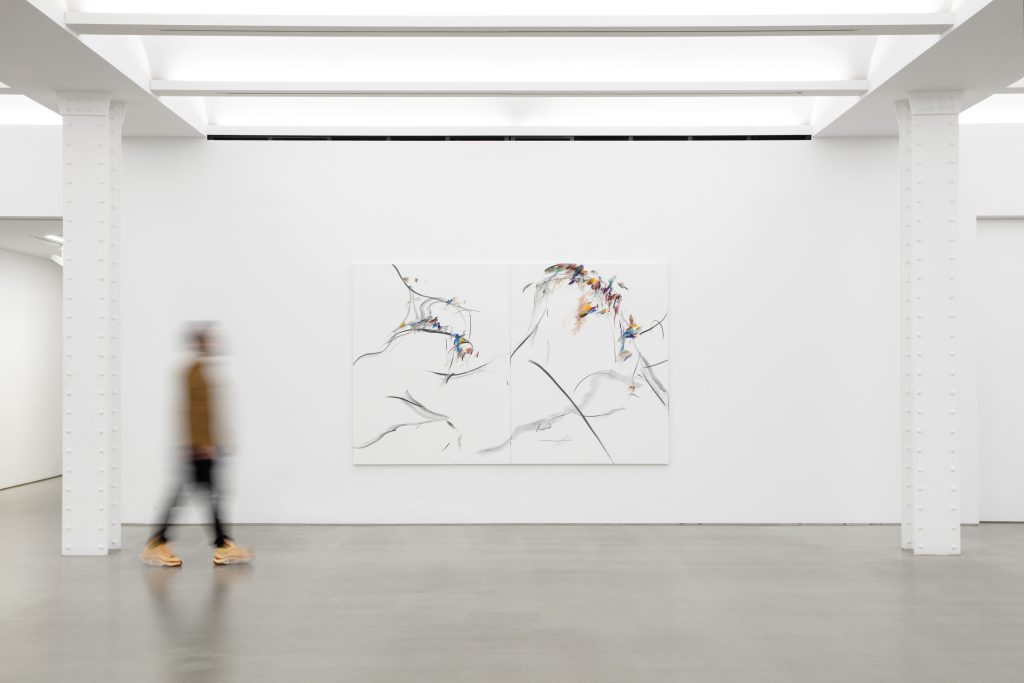
Photography by GUILLAUME ZICCARELLI
Step into the ethereal world of Xiyao Wang‘s artistic vision with her first US exhibition, Do You Hear the Waterfall? at Perrotin in New York. Wang invites viewers on a journey through her immersive landscapes entirely made from charcoal, where the boundaries between reality and imagination blur, creating a melody of reflectiveness that captivates and resonates with the soul, and shifts from the outbursts of high energy.
hube: In your abstract paintings, you describe expressing and capturing eternal life energy. Could you share a specific moment that served as a powerful inspiration and how that translated into the expressive lines of your art?
Xiyao Wang: Recently, I started taking lessons on the Guqin, a traditional Chinese plucked seven-string instrument with thousands of years of history. Sometimes, it is played by Taoists for personal contemplation as a form of meditation. They practice it in nature, sometimes behind a waterfall or by a lake.
When I practice Guqin, I feel eternity. While I am in this very moment, I let myself sink into it totally, as deeply as possible, like there is no existence of space and time. When I paint I feel the exact same way. During my creative process, I let all the inspirations come and go like ocean waves. What remains is very natural and free.
h: Growing up in a small country town on the Yangtze River, art seems to have played a central role in your life, with your father being an artist as well. How has your background and upbringing influenced your artistic style?
XW: The Yangtze River and the surrounding landscape have always been a great source of inspiration. To me, the river is synonymous with the feeling of home. For example, the central painting from my Paris Perrotin exhibition is called “River, River, Could You Tell Me the Story of My Hometown No.1”.
Yes, my father is an artist with a very open and poetic mind and soul. I still remember, there were always some uncompleted oil paintings in our living room. The smell of oil paint was constantly in the air. When I was about four years old, I started painting. There were Chinese and Western art catalogues and materials lying around. One of my earliest memories is from a particularly hot summer break; my father showed me how to draw something from one of the catalogues.
h: Your artistic journey has taken you from the rich traditions of China to the contemporary art scene in Berlin. How do you navigate the balance between preserving cultural influences in your work and embracing the diverse artistic perspectives you’ve encountered in different parts of the world?
XW: When I was 22, I came to Germany. I realised that there is much more difference between China and Europe than I thought. The contrasts between the cultures and the different landscapes give me a lot of inspiration. After having felt such a longing for the art of the West all those years in China, I was amazed that I now found my way back to the roots of my culture. My art has naturally become a synthesis of an Eastern and Western spirit. In my studio in Berlin, I finally recognised the rich treasure hidden in the millennia-old tradition of my homeland. And inside me, this treasure connected with the experiences I had gathered in the world so far.
h: Your artistic process is described as a nearly bodiless experience, where your soul seems to float in the air during the creation of a work. Can you elaborate on how this process shapes the emotions you aim to convey through your art?
XW: When at work, I am fully concentrated in a bodiless state. This generates a space where only my spirit and the painting exist. At this moment, everything outside of the studio is not important, I feel like I am alone on an uninhabited island. This total freedom and purity are what I enjoy the most during my painting process. I transfer myself into the painting through every movement. The results of this process are the traces of my soul.
h: Your paintings are often described as inviting viewers into imaginative spaces. If you could transport someone into the world within one of your paintings, what emotions do you hope they would feel, and what kind of journey would you want them to take on?
XW: The title of my show at König Gallery was “On the Way to Penglai Island”. Penglai is a legendary Chinese Island from mythology. The main idea of the exhibition title was to invite the visitors to take this trip to Penglai together with me. Similar to traditional Chinese landscape paintings, which often correspond to a journey through the landscape, it is combined with a reduction to a few lively and exciting points along the way. Everybody is invited to explore the utopias I create through my art, my paintings are indeed like entrances for the viewers.
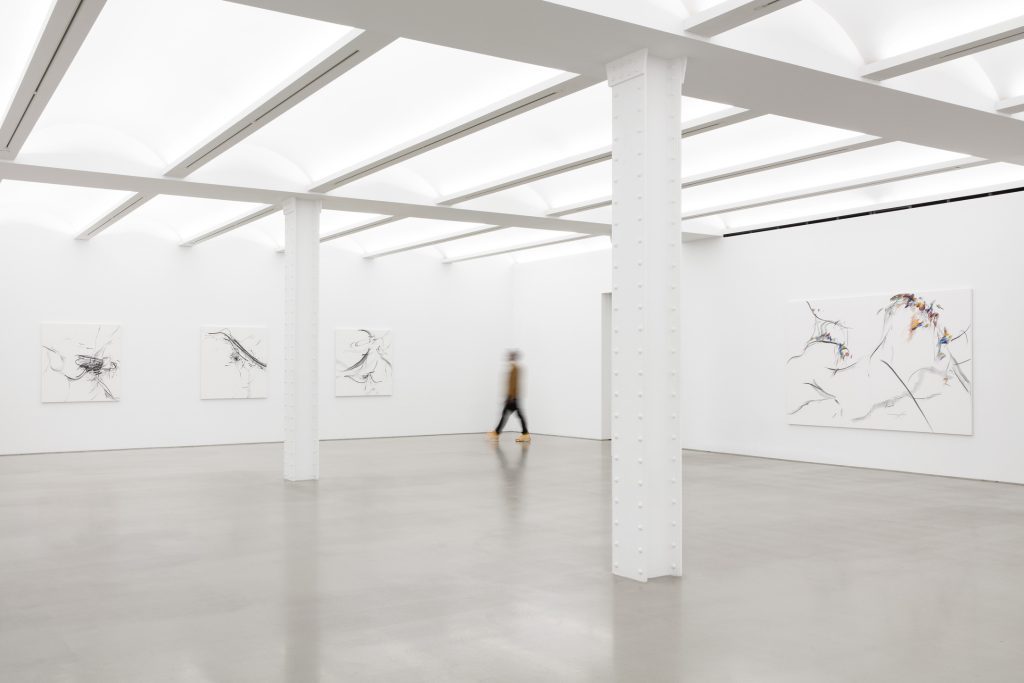
Photography by GUILLAUME ZICCARELLI
h: Looking back at your earlier works and comparing them to your more recent pieces, in what ways do you feel your style has evolved? Are there specific elements or techniques that you find yourself experimenting with now that you might not have explored before?
XW: My understanding of painting has developed throughout my life and the pictures I want to create have changed accordingly. In the endless cycle of adding and subtracting (I’m in a stage of subtraction now), I gradually find materials that are more suitable for my artistic language, or the materials that are most suitable for the current state of my work. In this process, the research of the lines themselves, and the discovery of the further potential of the lines in my artistic practice have always been with me. The lines are becoming more and more important. I use different materials to paint lines and I also experiment with the same materials (for example, the charcoal I am using now) to maximise the possibilities of the line itself.
h: In your journey as an artist, you’ve stayed true to your principles, and each painting is considered an important element in your body of work. How do you see your artistic style evolving in the future, and are there specific themes or concepts you’re eager to touch upon in your upcoming projects?
XW: As I have said in my last answer, my artistic process is an endless circle of adding and subtracting. There are always different contents and themes of my art at different times but everything is fundamentally connected to boundlessness and weightlessness.
Compared to my last solo show this summer at Perrotin Seoul “Allongé — Out of Reach” which was partly inspired by ballet, my current show in Beijing “Liang Xiao Yin” (Tang Contemporary December 16th, 2023 — January 28th, 2024) and upcoming show in New York “Do you hear the waterfall?” (Perrotin January 12th — February 24th, 2024) are more leaning back to my roots that are connected to such cultural Chinese themes like Taoism and mythology.
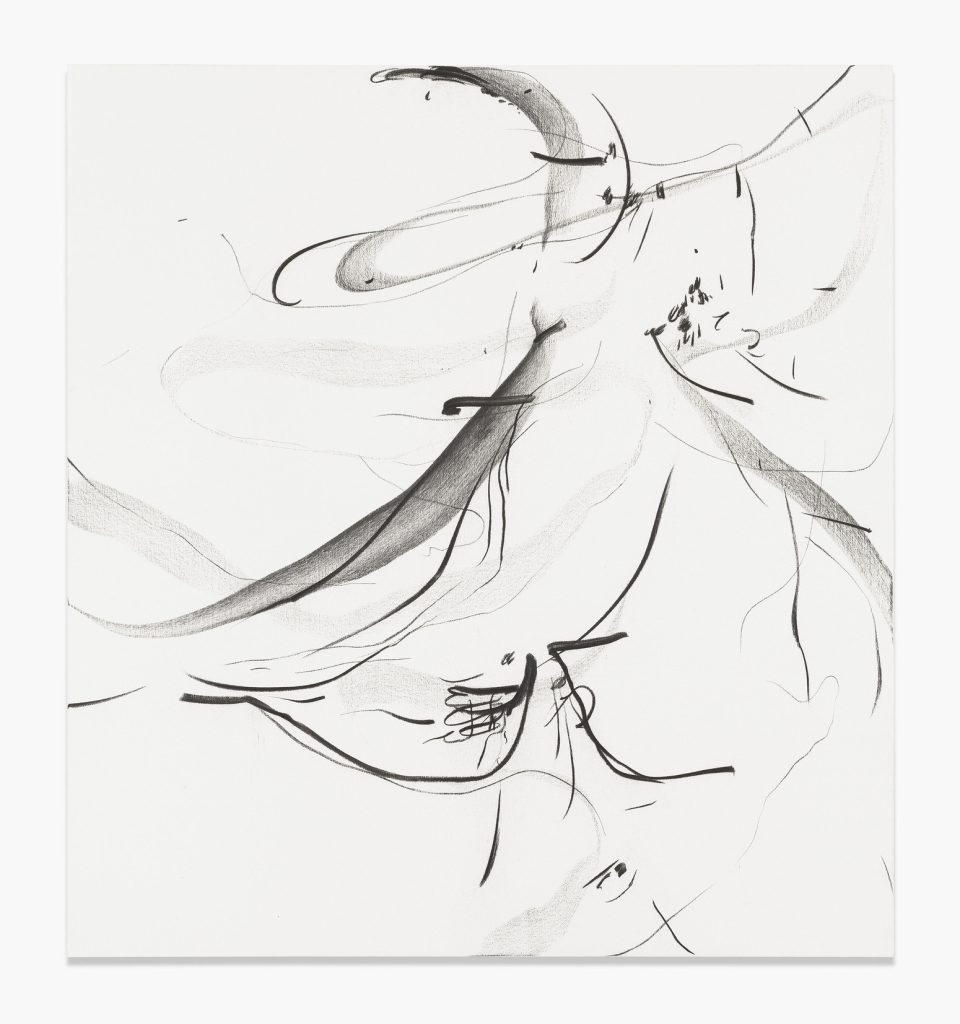
No. 6, 2023
Photography by ROMAN MARZ Courtesy of PERROTIN and the artist
/mepr-show]
